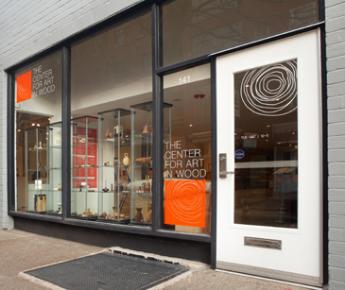Related Topics
North of Market
The term once referred to the Quaker district along Arch Street, and then to a larger district that had its heyday after the Civil War, industrialized, declined, and is now our worst urban problem area.
Art in Philadelphia
The history of art, particularly painting and sculpture, has been a long and distinguished one. If you add in the art schools, the Philadelphia national influence on artists has been a dominant one.
Customs, Culture and Traditions (2)
.
Right Angle Club 2010
2010 is coming to a close, a lame-duck session is upon us, and probably after that will come two years of gridlock. But the Philadelphia Men's Club called the Right Angle, keeps right on talking about the current scene. A few of these current contents relate to speeches given elsewhere.
Wood Turning

|
| The Wood Turning Center |
A lot of people are named Turner, probably reflecting some degree of ancestry of wood turners. That's an ancient skill, using wood lathes. In Colonial days, commercial wood turning had a focus on banisters of houses, flag poles, and even toothpicks. At the present time, it is mostly a hobby conducted in garages by people who are mechanically inclined; but when a skilled artist takes it up, the products can be exquisite works of art. Because this is America, there is a national club of artisans and admirers, called the Furniture Society, and a local Philadelphia club called the Wood Turning Center. It's located at 141 North 3rd Street. Because of one-way streets, you are advised to consult a map if you plan to drive there, on the north edge of the Ben Franklin Bridge, rather near the Constitution Center. Ron Humbertson, the curator of the museum, recently visited the Right Angle Club and talked about the subject.
The average skilled amateur takes ten or more hours to produce a wooden bowl on a wood lathe, but the professionals manage to do it in about five hours. If you start with a gnarled tree trunk, the product has many interesting lines and whorls. But then the artisan has to contend with knot holes, unexpected holes of wood rot, and the likelihood of cracking the piece in the process of carving it. By far the majority of a piece of raw wood is then carved away and discarded, something that bothers real tree lovers.
Because of all these unexpected features of the wood, the thinner the final piece, the more likely it is to crack and experience other mishaps, perhaps even leading to discards and starting all over. Even just drying the raw wood can lead to cracks, and sometimes even before the carving begins, so real artists gently dry the wood themselves as part of the whole process of producing art. Even if it doesn't crack, the usual finishing process involves five or more layers of clear epoxy finish, to reduce scratching and to hold it together to prevent those cracks. Those bowls which are intended to hold salads had better be crack-free if salad oil is to be poured on the food. Like any other piece of art, the really outstanding pieces are not intended to go on dining tables.
Originally published: Friday, April 30, 2010; most-recently modified: Friday, May 31, 2019